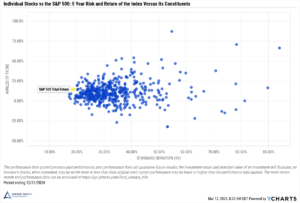6 tax strategies for incentive stock options and AMT
Triggering the alternative minimum tax isn’t the end of the world, but you don’t want to do it by accident. Here are six tax planning strategies to consider when exercising and selling ISOs in 2025:
- Exercise early in the year
- Exercise late in the year
- Exercise unvested ISOs
- Tax planning around AMT exemptions, phase outs, and tax deductions
- Ways to accelerate AMT credits
- Exercise ISOs when regular income is already high
1. Exercise ISOs early in the year to manage or avoid AMT
To get long-term capital gains tax treatment, you need to hold ISOs through the end of the year of exercise. This is what exposes you to possible AMT. But exercising early in the year can help in some situations, especially for public company employees:
- You exercise in January, 1 year after grant. By December, your CPA and financial advisor can help in developing a tax projection for the year. It should include whether you’ll trigger the AMT, and if so, the projected amount of tax due.
- If the stock is publicly traded and you’re not in a post-IPO lockup, you could sell before the end of the year. That would result in a disqualifying disposition but no AMT. You’d have liquidity from the sale to pay any tax due in April.
- Alternatively, and again assuming there’s a liquid market for the shares and you’re not subject to restrictions, you could hold the stock and sell in January of the following year. While it wouldn’t help you avoid AMT, you could still pick up a qualifying long-term holding period (again assuming you meet all the holding requirements) and also be able to sell in time to raise cash to pay the tax.
- Monitoring the stock price is another potential benefit of exercising early in the year. Remember, the AMT calculation uses the spread at exercise. If the stock drops significantly during the year and you keep holding the shares, you could still trigger the AMT at the old, much higher, valuation. In that case, it may make sense to take a disqualifying disposition.
If you work for a private company, startup, or are early-exercising unvested shares, this strategy likely won’t help much as you won’t have the ability to control the timing of future stock sales.
2. Exercise ISOs at the end of the year also to manage or avoid AMT
Exercising at the end of the year can also yield tax planning opportunities for incentive stock options and AMT, especially for employees of private companies.
By the end of the year, you already know most of the tax inputs so your CPA and financial advisor can help in developing a tax projection. This will enable you to make a decision about whether to exercise before doing so. And (hopefully) you’ll have good data on whether you’ll trigger the AMT and your cash needs. This is important since unlike the prior example, employees at pre-IPO companies don’t typically have a market to sell their shares. So there’s no ejection button if things go south.
For employees of private companies, cash considerations are often the biggest hurdle. If you have a low strike and a big spread, how will you get liquidity to pay the AMT? Or if there’s no spread, but you joined a mature start-up and the strike price is $10/share, how will you get the cash to exercise even 100,000 shares? The cash crunch is quick to rain on a potential tax planning parade.
How Incentive Stock Options are Taxed
3. Exercise early (before vesting) to reduce AMT spread
For private company start-up employees, early exercising stock options may be able to reduce tax with an 83(b) election. An early exercise can also start the clock on the holding period for long-term capital gains.
With an 83(b) election, taxpayers elect to accelerate the tax treatment of exercising their options, even though the shares haven’t vested. That’s key because at grant, the strike price usually equals the current fair market value of the stock. If exercised immediately and timely filing of an 83(b) election, there may be an opportunity to have a $0 spread for AMT. And here, there are still no federal tax implications.
Like any strategy, this is not without risk and potential tax implications. For example, M&A activity can cut your holding period short. Or you leave and the shares don’t vest. Also, non-qualified stock options are usually more advantageous for early exercises given the one-year time frame for long-term capital gains. Pro tip: negotiate the type of equity you want.
Read more about the pros and cons of early exercising stock options.
4. Tax planning exercises around AMT exemptions, phase outs, deductions, and tax rates
Taxpayers under certain income levels can take advantage of AMT exemptions. Before exercising stock options, work with your CPA and financial advisor to assess the impact of potential exercises. It can be possible to structure an exercise to stay under (but close to) the threshold where AMT would be triggered. A big part of this strategy is often ensuring you exercise only so many shares as to remain eligible for AMT exemptions.
If you’re in the AMT exemption phase out zone, it might be beneficial to avoid realizing long-term capital gains. The exemption is reduced 25 cents for each dollar over the income thresholds (discussed later) which can have the effect of adding another 7% to tax rates in the AMT phase out zone. This can mean an effective 35% regular AMT income tax rate or add 7% to the 15% or 20% long-term capital gains rate.
However, there can be some strategic tax planning opportunities when the exemption is fully phased out. That can happen when the top income tax rate (37%) is compared to the flat 28% AMT. So in some cases, it can actually make sense to accelerate income.
Another potential strategy to consider discussing with your tax advisor are your tax deductions. In the AMT calculation, some itemized deductions are permitted, such as the deduction for mortgage interest (subject to regular rules). So as an example of one strategy to consider, when subject to the AMT, it’s sometimes better to itemize tax deductions even if it’s less than the standard deduction (not allowed in the AMT calculation).
As you can see, the tax planning opportunities, rules, and caveats are very intricate and complex. Consulting a tax advisor to discuss your situation is highly recommended.
5. Tax strategies to recoup AMT credits faster
Strategic selling. Most executives with stock options have different grants with various strike prices and cost basis on their shares. (Recall earlier discussion on dual cost basis and AMT adjustments!) Essentially, when you trigger the AMT, the larger the spread at exercise, the more tax you’ll prepay. This, in turn, means you can have a larger AMT credit to (hopefully) provide a negative adjustment in years when not subject to AMT.
Therefore, when considering what shares to sell and when, it can help to be choosey. The shares that initially created the biggest positive AMT adjustment at exercise could provide the best opportunity to use more of your AMT tax credit that tax year. While the exact ISOs that created the AMT liability don’t have to be sold to recoup it in a credit, due to the cost basis differentials, selling those shares can help facilitate taking larger credit later on. Because it can take years for taxpayers to fully absorb their AMT credits, this is an important planning consideration.
Matching exercises with sales. In conjunction the strategic selling, also look into matching ISO exercises with sales to reduce/offset the AMT. If you sell ISOs and realize a large negative AMT adjustment for the year, consider pairing a new exercise the same year. The negative AMT adjustment from the sale can reduce the positive AMT adjustment, enabling you to potentially still utilize some of your AMT credit (although a smaller amount due to the exercise) or trigger the AMT but mitigate the impact.
6. Exercise ISOs when your regular taxable income is already high
Due to the AMT tax rates (26% and 28%), exercising ISOs during a year where taxpayers already have high ordinary income (37% is the top rate in 2025) is another way to potentially avoid triggering the AMT. So if you have a large windfall from a bonus, vesting RSUs, exercise (or sale) of non-qualified stock options or income in connection with a restricted stock award, it might be a good year to consider exercising ISOs. Again, you’ll pay the higher tax under either calculation. Run the numbers to find out.
2026 tax law changes impacting alternative minimum tax
The 2017 Tax Cuts and Jobs Act drastically reduced the number of taxpayers who were subject to the AMT. These favorable changes are set to sunset in 2026.
AMT exemptions: The AMT exemption was $84,500 for married taxpayers filing jointly and $54,300 for single filers in 2017. In 2025, the exemptions are $137,000 and $88,100, respectively.
Income phase out limits: In 2017, the income limit where these exemptions begin to phase out was $160,900 for married couples and $120,700 for single filers. In 2025, the exemption phase out limits increase dramatically: $1,252,700 for married taxpayers filing jointly and $626,350 for single filers.
The higher limits mean most stock option holders have more flexibility to exercise without triggering the alternative minimum tax. While you never want to let the tax-tail wag the dog, for executives with incentive stock options, tax planning can be a multi-year strategy.
Tax strategies for ISOs and AMT
If ISOs are a big part of your wealth, consider working with a stock option advisor and CPA. In addition to tax strategies for ISOs and the AMT at exercise, you’ll ultimately need to plan your exit and diversify a concentrated stock position. For more on stock option and IPO planning, please visit our website.
Article is for informational purposes only and should not be misinterpreted as personalized advice of any kind or a recommendation for any specific financial or tax strategy. This is a general communication should not be used as the basis for making any type of tax, financial, legal, or investment decision.
[Last reviewed February 2025]











